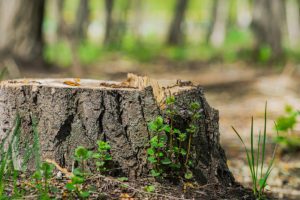
Essential Tips for Hiring a Reliable Tree Service Provider
Hiring a reliable tree service provider is crucial for maintaining the health and beauty of your landscape while ensuring the safety of your property. Trees require specialized care that includes pruning, disease management, and sometimes removal. Choosing the right tree service provider can be a daunting task, given the number of options available. This comprehensive guide will provide you with essential tips to help you hire a reliable tree service provider.
Understanding the Importance of Professional Tree Services
Professional tree services offer numerous benefits that go beyond basic maintenance. Here’s why hiring a professional is essential:
Safety
Tree work can be dangerous, involving heights, heavy equipment, and the risk of falling branches. Professionals have the training and equipment to perform these tasks safely.
Expertise
Certified arborists and tree service professionals have the knowledge to diagnose and treat tree diseases, pests, and structural issues. They can provide expert advice on tree care and maintenance.
Efficiency
Professional tree service providers can complete tasks quickly and efficiently, minimizing disruption to your property. They also have the equipment to handle large and complex jobs.
Property Value
Well-maintained trees enhance the aesthetic appeal and value of your property. Professional care ensures your trees remain healthy and attractive.

Essential Tips for Hiring a Reliable Tree Service Provider
1. Verify Credentials and Certification
Check for Certification
Ensure that the tree service provider employs certified arborists. Certification from organizations like the International Society of Arboriculture (ISA) indicates that the arborist has met professional standards of knowledge and performance.
Verify Licensing and Insurance
A reliable tree service provider should be licensed and insured. Verify that they have liability insurance and worker’s compensation insurance. This protects you from liability in case of accidents or damage to your property.
2. Research Reputation and Reviews
Look for Reviews and Testimonials
Check online reviews and testimonials from previous customers. Websites like Google, Yelp, and Angie’s List can provide valuable insights into the company’s reputation and customer satisfaction.
Ask for References
Request references from the tree service provider. Contact these references to ask about their experiences, the quality of work, and the reliability of the company.
3. Assess Experience and Expertise
Evaluate Experience
Consider how long the tree service provider has been in business. A company with years of experience is more likely to provide reliable and high-quality services.
Check Specializations
Different tree service providers may specialize in different areas, such as pruning, tree removal, or disease management. Ensure that the provider you choose has expertise in the specific services you need.
4. Request Detailed Estimates
Get Multiple Estimates
Obtain detailed estimates from at least three different tree service providers. Compare the scope of work, pricing, and any additional services offered.
Check for Transparency
Ensure that the estimates are transparent and itemized. This helps you understand what you are paying for and avoid hidden tree service costs.

5. Evaluate Equipment and Safety Practices
Inspect Equipment
Ask about the equipment the company uses. Well-maintained and modern equipment indicates a professional operation and ensures that the job will be done efficiently.
Safety Protocols
Inquire about the safety protocols the company follows. Reliable tree service providers prioritize safety and have comprehensive safety plans in place.
6. Confirm Service Inclusions
Scope of Work
Make sure you understand the scope of work included in the estimate. This should cover everything from preparation and execution to cleanup and disposal.
Cleanup and Disposal
Confirm that the company will handle cleanup and disposal of debris. Leaving your property clean and tidy after the job is a sign of professionalism.
7. Understand the Contract
Review the Contract
Carefully review the contract before signing. Ensure it includes details about the scope of work, pricing, timeline, and any guarantees or warranties.
Clarify Terms
Clarify any terms you do not understand and ensure that everything you have discussed is included in the contract. Do not sign until you are fully satisfied with the terms.
8. Check for Professional Affiliations
Membership in Professional Organizations
Membership in professional organizations like the Tree Care Industry Association (TCIA) or the ISA is a good indicator of the company’s commitment to industry standards and ongoing education.

9. Ask About Emergency Services
Availability of Emergency Services
Find out if the tree service provider offers emergency services. Storms and other unexpected events can cause tree damage that needs immediate attention.
10. Monitor the Work
Stay Involved
While the work is being done, stay involved and monitor the progress. This ensures that the job is being performed to your satisfaction and according to the agreed terms.
Provide Feedback
Provide feedback to the tree service provider. Positive feedback reinforces good practices, while constructive criticism helps them improve their services.
Expanding on Important Considerations
Understanding the Different Types of Tree Services
Tree service providers offer a range of services, each requiring specific skills and equipment. Understanding these services can help you determine what you need and assess the capabilities of potential providers.
Pruning and Trimming
Pruning and trimming are essential for maintaining the health and appearance of your trees. Pruning involves removing dead or diseased branches to prevent the spread of disease and improve tree structure. Trimming is typically done to shape the tree and enhance its aesthetic appeal. Both tasks require knowledge of tree biology to avoid damaging the tree.
Tree Removal
Tree removal is a complex and potentially hazardous task that should be performed by professionals. Reasons for tree removal include disease, storm damage, or trees growing too close to structures. A reliable tree service provider will assess the tree’s condition and determine the safest method for removal.
Stump Grinding and Removal
After a tree is removed, the stump remains. Stump grinding involves using a machine to grind the stump down to below ground level, allowing you to replant or landscape the area. Complete stump removal involves extracting the entire stump and root system, which is more labor-intensive but prevents any regrowth.

Emergency Tree Services
Emergency tree services are crucial after storms or other events that cause tree damage. These services often involve removing fallen trees, clearing debris, and assessing other trees for potential hazards. A reliable tree service provider should be able to respond quickly to emergencies to minimize damage to your property.
Tree Health Care
Tree health care includes diagnosing and treating diseases, pest infestations, and nutrient deficiencies. Certified arborists can provide treatments such as fertilization, soil aeration, and pest control to maintain or restore tree health. Regular health assessments can prevent issues from becoming severe.
The Role of Certified Arborists
Certified arborists are tree care professionals who have been trained and certified by the International Society of Arboriculture (ISA). They have extensive knowledge of tree biology, health, and care practices. Hiring a certified arborist ensures that your trees are cared for by someone who understands their needs and the best practices for their maintenance.
- Education and Training: Certified arborists undergo rigorous education and training in tree care. They must pass an exam that covers all aspects of arboriculture, including tree biology, diagnosis, maintenance practices, and safety. Continuing education is required to maintain certification, ensuring that arborists stay current with the latest research and techniques.
- Tree Risk Assessment: Certified arborists are trained to conduct tree risk assessments, evaluating the potential hazards posed by trees on your property. They can identify structural weaknesses, signs of disease, and other factors that may compromise a tree’s stability. Based on their assessment, they can recommend appropriate actions to mitigate risks.
- Customized Tree Care Plans: Arborists can develop customized tree care plans tailored to your landscape’s specific needs. These plans may include regular pruning schedules, health treatments, and recommendations for new plantings. A well-thought-out care plan helps ensure the long-term health and beauty of your trees.

The Importance of Safety in Tree Services
Safety is a paramount concern in tree services due to the inherent risks involved. Professional tree service providers prioritize safety to protect their workers, clients, and property.
- Training and Certification: Tree service professionals undergo extensive training to safely perform tasks such as climbing, using chainsaws, and operating heavy equipment. Certification programs, such as those offered by the ISA, ensure that workers are knowledgeable about safety protocols and best practices.
- Safety Equipment: Proper safety equipment is essential for tree work. This includes helmets, eye protection, gloves, harnesses, and chainsaw chaps. Professional tree service providers invest in high-quality safety gear to minimize the risk of injury.
- Job Site Safety Protocols: Reputable tree service providers implement strict safety protocols on job sites. This includes securing the work area, using proper rigging techniques, and ensuring that all equipment is in good working order. They also conduct pre-job safety meetings to review the plan and address any potential hazards.
Legal and Regulatory Considerations
Hiring a tree service provider involves navigating various legal and regulatory considerations to ensure compliance and protect yourself from liability.
Permits and Regulations
Certain tree work, such as removal of large trees or work near power lines, may require permits or adherence to local regulations. A reliable tree service provider will be knowledgeable about these requirements and handle the permitting process for you.
Insurance and Liability
Ensure that the tree service provider has adequate insurance coverage, including liability insurance and worker’s compensation. This protects you from being held liable for any injuries or damages that occur during the job. Ask to see proof of insurance before work begins.
Contracts and Agreements
A written contract is essential for any tree service job. The contract should detail the scope of work, pricing, timeline, and any warranties or guarantees. Review the contract carefully and ensure that all terms are clear and agreed upon before signing.
Hiring a reliable tree service provider requires careful consideration and research. By verifying credentials, researching reputation, assessing experience, and requesting detailed estimates, you can ensure that you choose a provider who will deliver high-quality services. Additionally, understanding the contract, checking for professional affiliations, and monitoring the work will help ensure a successful and satisfying experience.
Investing in professional tree services not only enhances the beauty and health of your trees but also protects your property and ensures safety. Follow these essential tips to hire a reliable tree service provider and enjoy the benefits of well-maintained, healthy trees on your property. Whether you need routine maintenance, emergency services, or specialized care, choosing the right provider is key to achieving the best results.

Leave a Reply